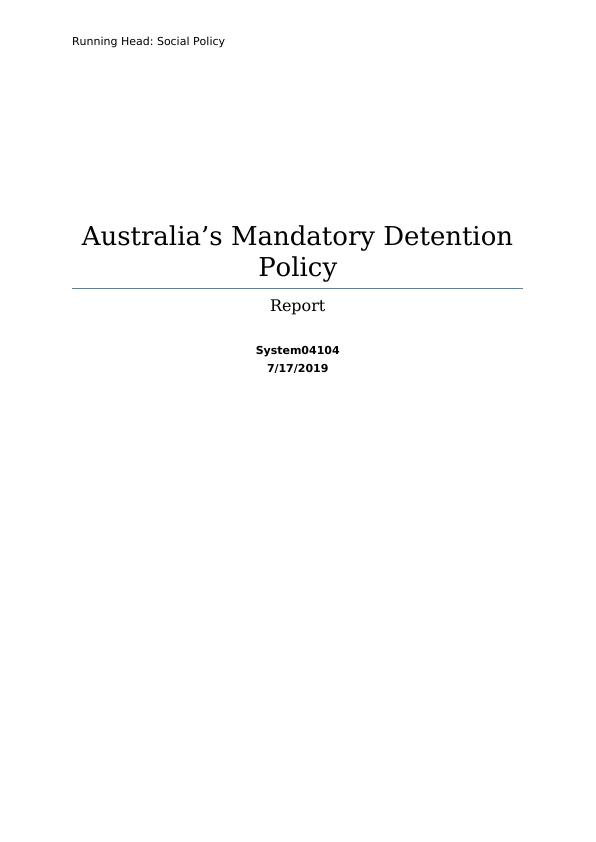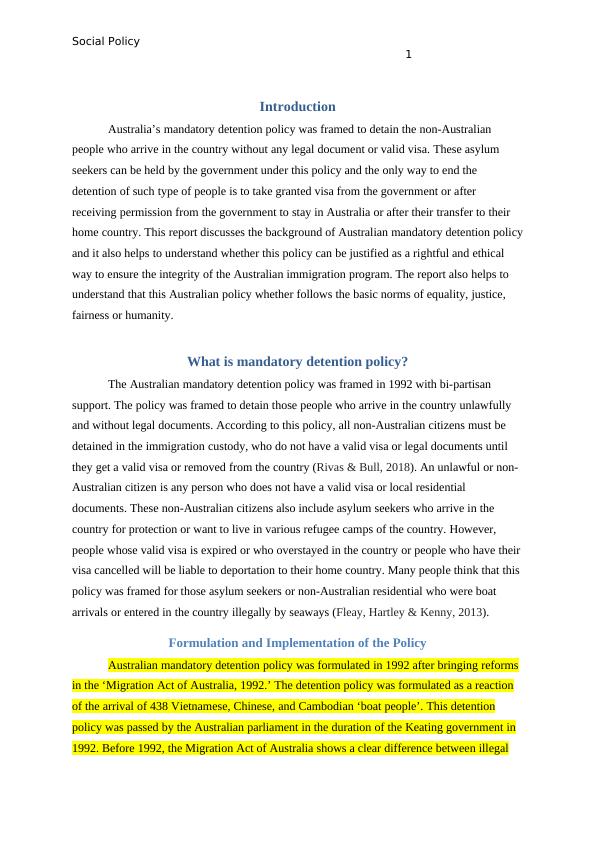Australia’s Mandatory Detention Policy Report
Write a report on the policy process using Australia’s Mandatory Detention policy as a case study, discussing its planning, formulation, implementation, evaluation, and its impact on empowerment, participation, equality, justice, and fairness.
7 Pages2165 Words372 Views
Added on 2022-11-14
About This Document
This report discusses the background of Australian mandatory detention policy and it also helps to understand whether this policy can be justified as a rightful and ethical way to ensure the integrity of the Australian immigration program. The report also helps to understand that this Australian policy whether follows the basic norms of equality, justice, fairness or humanity.
Australia’s Mandatory Detention Policy Report
Write a report on the policy process using Australia’s Mandatory Detention policy as a case study, discussing its planning, formulation, implementation, evaluation, and its impact on empowerment, participation, equality, justice, and fairness.
Added on 2022-11-14
ShareRelated Documents
End of preview
Want to access all the pages? Upload your documents or become a member.
Australia's Mandatory Detention Policy: Stages, Empowerment, and Evaluation
|7
|2172
|337
Mandatory Detention Policy in Australia: A Review
|12
|2328
|205
SOC 103A: Bachelor of Applied Social Science
|8
|1917
|79
Essay on social policy Assignment
|7
|1783
|41
Developing Social Policy
|10
|2257
|203
Australian Detention Policy: Types, History, and Issues
|7
|2049
|285



